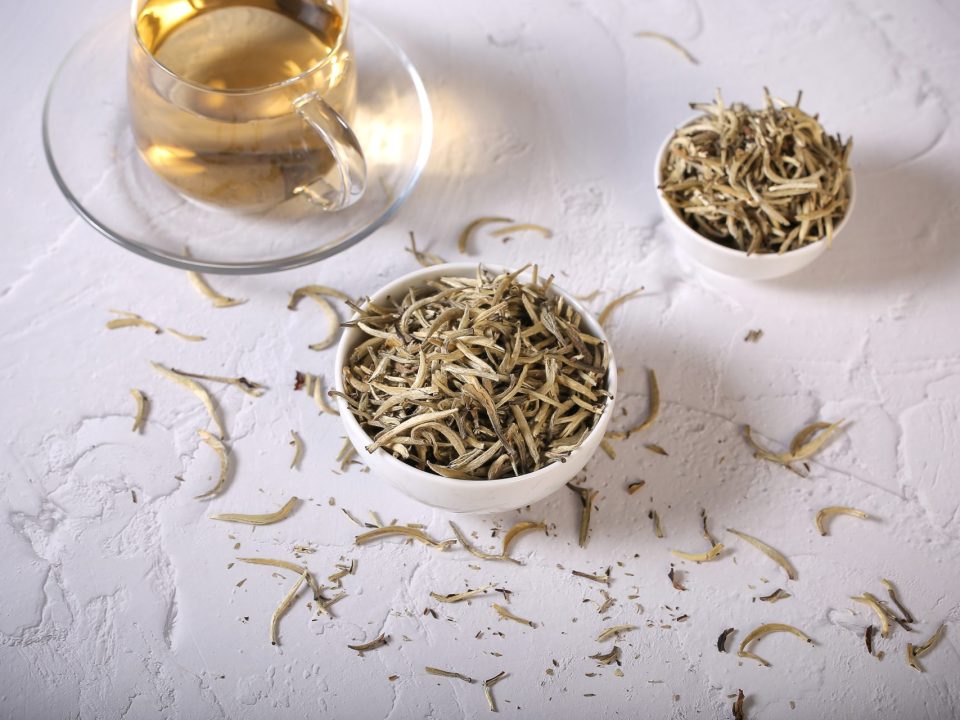
Matcha Recipes
February 9, 2021
First Flush Darjeeling Teas
April 20, 2021Da Hong Pao meaning “Big Red Robe” is the name of China’s finest Oolong tea. A tea that is beloved, sought after, given as a gift and steeped in centuries old legend. We are really pleased to have been able to source this excellent tea, which you can buy and try for yourself here.
Known for its delicious notes and subtlety, it is rare and hard to find. Da Hong Pao is such a popular and famous tea but not a huge area is dedicated to its growth. These factors mean it is not cheap but the price really reflects the quality and enjoyment to be gained from this incredible tea.

The Legend of Da Hong Pao
How did the name of this tea come to be? Why is it so legendary? As with all the greatest Chinese legends there are several versions, the story of Da Hong Pao is certainly no different.
The most well known one originating in the Ming Dynasty says that once an immortal was fighting nine dragons in the sky. Upon vanquishing the dragons they fell and became the peaks of the Wuyi mountains. The immortal left a cluster of tea bushes on the mountain side as a reminder of his triumph, monks tended to and cared for these tea plants lovingly.
Years later a scholar was preparing to take imperial exams in Beijing, these tests were important for verifying state officials. The scholar fell ill before his exams and the local monks gave him tea from the immortal’s tea bushes to drink. The scholar was revived and able to travel for his exams which he passed with top scores!
Some years later the Emperor’s mother was taken ill and the scholar suggested she try the tea he had been given. To everybody’s relief she was seemingly miraculously cured! The Emperor decreed that big red robes, usually reserved for palace officials, be draped around the base of the tea bushes to show his gratitude for them healing his mother.
Origin
Da Hong Pao is a Wuyi rock tea. Rock teas or “Yancha” are grown in the rocky soil of the startling Wuyi Mountain range located in the Fujian province of China. The landscape of mountain streams, gorges rich in limestone, clean air and rainfall produces teas which are rich in mineral qualities and highly aromatic in flavour.

The original mother bushes which Da Hong Pao was originally plucked from can still be seen in the Wuyi mountains. Today they are protected and no leaves are picked from them. The last time tea was harvested was over 10 years ago and sold for an astronomical amount, more than 20 times its weight in gold!
Cuttings were taken from the original bushes in the 1980’s and have been asexually reproduced, these days Da Hong Pao tea comes from a descendant of this ancient cultivar. In some cases blends of different teas are mixed to create a tea which has the same characteristics as Da Hong Pao and is sold as such. However the flavour of these blends often falls flat after a couple of infusions.
Production
The creation of Da Hong Pao is a lengthy process but each step is necessary to craft such an exquisite tea. Tea producers in the Wuyi region are often tight lipped when it comes to the secrets of making this tea, knowledge being passed down from generation to generation.
Da Hong Pao leaves are harvested once a year, in May or June. One bud and two leaves from each plant are picked and laid in the sun so that the light and breeze dry them out reducing the water content.

Once dried the leaves are taken inside and placed in bamboo trays, they are shaken and lightly rolled. The rolling action bruises the leaves and causes oxidisation which is essential for the fragrance and taste of an Oolong tea.
Next the partially worked leaf is placed in a hot pan or mechanical wok. Heat is used to “seal” the flavour, the alternation between the leaves being kneaded and heated is repeated many times, and takes hours. Once the leaves are worked sufficiently they are baked. Baking gives the tea a deeper level of oxidisation and a slight “toasty” flavour.
Taste and character
Da Hong Pao leaves are large, twisted and dark, with a rough appearance that is in contrast with the teas delicate yet complex taste.
Brewing releases a deep amber colour liquor with a delightful aroma of orchids and cherry blossoms.

The flavour of the tea itself is a magnificent tapestry of flavours. A bright fruitiness with a sweet earthiness, nutty notes and some woody charcoal hints. Each sip a journey in itself. The leaves give a full flavour with a dry finish fit for multiple infusions.
Tips for brewing Da Hong Pao
- Use a high leaf to water ratio. About 4g to 150ml of water. Using a little more leaf will really allow you to experience all of the notes in them.
- Use water that is 95°
- First pour boiling water over your leaves and then discard the water. This will open the leaves and get them ready to give you their fullest flavour.
- Infuse for 2 mins, and put the leaves aside for further infusions.
- For your second third and fourth infusions use the same water from your first as it is cooling down.
- If you don’t want to re-infuse the leaves straight away keep them and simply use fresh boiling water when you are ready to brew.
Share your tea journey, keep up to date with our latest news, teas and coffees over on our facebook page.




